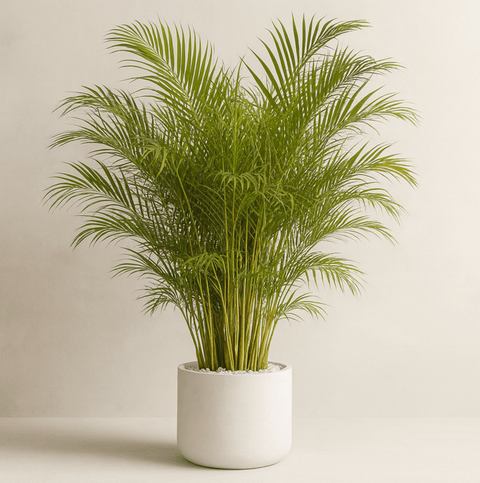Sassafras trees (Sassafras albidum) are a great addition to any garden, offering year-round beauty and benefits. This guide will explore how you can create multi-season interest by planting these unique trees in your landscape.

1. Understanding Sassafras Trees
Sassafras trees are known for their unique appearance. They can grow to be 30-60 feet tall with a spreading canopy. Their leaves come in three distinct shapes, making the tree even more fascinating. In the fall, these leaves transform into a vibrant display of yellow, orange, and red, creating a stunning visual. Additionally, sassafras trees produce small yellow-green flowers in the spring and dark blue fruit in the fall, adding to their appeal.
2. Seasonal Highlights
Spring:
In the spring, sassafras trees bloom with delicate yellow-green flowers, while new leaves begin to emerge, setting the stage for their seasonal beauty.
Summer:
Throughout summer, sassafras trees offer lush green foliage that creates a cool, shady retreat. Their leaves also attract a variety of wildlife, including pollinators and birds.
Fall:
The fall season brings a stunning display of vibrant yellow, orange, and red leaves, making the sassafras a focal point in any autumn landscape.
Winter:
Even in winter, the sassafras tree offers visual interest through its bare branches and distinct structure, providing contrast in snowy or barren winter gardens.

3. Ideal Growing Conditions
Sassafras trees thrive in well-draining, acidic to slightly alkaline soil. They prefer full sun but can tolerate partial shade. When planting, it's important to give the tree enough space, as they can grow up to 30-60 feet tall and 25-40 feet wide when mature.
4. Planting Sassafras Trees
When planting sassafras trees, choose a location with ample sunlight and space to accommodate their mature size. Dig a hole twice as wide as the root ball and plant the tree so that the top of the root ball is level with or slightly above the surrounding soil. Water deeply after planting to settle the soil and ensure proper root contact. The best time to plant is either in spring or fall.
5. Care and Maintenance
Sassafras trees require regular watering, especially during their first few years. Once established, they are drought-tolerant but still benefit from occasional deep watering. Pruning should be done in late winter or early spring to remove dead or damaged branches and maintain the tree’s shape. Watch for common pests such as aphids, and ensure the tree has good airflow to avoid fungal diseases.
6. Incorporating Sassafras in Garden Design
Sassafras trees work well in both naturalized and formal garden settings. Pair them with other native shrubs and trees like dogwood or redbud for a layered look. Plan your garden with all seasons in mind to take full advantage of the sassafras tree’s year-round beauty.

7. Cultural Significance and Uses
Sassafras has been used historically in culinary and medicinal applications. In the garden, its ecological importance lies in its role as a food source for local wildlife, helping to maintain biodiversity. Its roots were traditionally used to make tea, though this practice has diminished due to health concerns.






























Comments (0)
There are no comments for this article. Be the first one to leave a message!